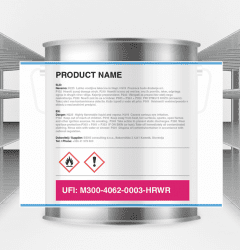25 Nov

We often come across the myth that some information contained in the Safety Data Sheets (SDS) is confidential.
A basic rule applies. No confidentiality may be imposed on information that should be included in the Safety Data Sheet. Only one thing can remain “concealed” in the SDS. Namely, the secrecy of the chemical name.
That is, if the product contains hazardous substances which exceed certain concentrations (usually 0.1% or 1%), we must indicate them under item 3 of the Safety Data Sheet. We cannot just conceal them.
That is, if the product contains hazardous substances which exceed certain concentrations (usually 0.1% or 1%), we must indicate them under item 3 of the Safety Data Sheet.
However, they can be masked. For example, we do not exactly specify the substance but rather only the group the substance belongs to, such as for example alcohol.
Even this form of masking may only be used to a certain extent.
The more hazardous the chemical or compound is, the more difficult (or even impossible) it is to mask it. For instance, formaldehyde cannot be concealed under another name or even left out when specifying information.
Experience shows that with chemicals which are labelled as irritant (or even hazardous for the environment) the secrecy of the chemical name can be concealed. It should be noted that this cannot be performed arbitrarily. In this case, an application must be send to the European Chemicals Agency and obtain the permission to do so.
A company must demonstrate that the disclosure of the chemical identity of the substance on the label or the Safety Data Sheet could jeopardize the confidential nature of their activity, in particular their intellectual property.
Before the CLP was introduced this could be done here at the Chemical Office of the Republic of Slovenia. However, after CLP entered into force it is no longer possible.



Simona Miklavčič